The job of being President of the United States is often called ‘the most powerful office in the world’ — and also one of the most stressful. As a result, the position usually attracts big personalities with even bigger quirks and kinks, providing no shortage of amazing anecdotes.
Below is a mere sampling of the bounty of shenanigans committed by those who roamed the hallowed halls of 1600 Pennsylvania Avenue.
10. Operation V-Day

Dwight D. Eisenhower lived an extraordinary life marked by triumph and determination. Known as “Ike” to his family and friends, he excelled on the football field at West Point and later became the Supreme Allied Commander during World War Two. Therefore, it came as a shock when the 5-star general discovered killing Nazis paled in comparison to fighting squirrels on the banks of the Potomac.
During his two terms as Commander-in-Chief, Eisenhower enjoyed playing golf. Make that BUCKETS of golf, logging over 800 rounds that would ultimately help popularize the sport to the American public. He even had a putting green installed on the White House lawn to work on his less than stellar short game (he shot in the low 90s). But one battle that gave the career soldier fits above all else involved a small army of pesky vermin that ravaged his beloved turf. V-Day had begun.
Eisenhower quickly mobilized his troops, ordering White House staff to launch an all-out ground assault. The enemy, however, dug in. The bushy-tailed commandos sprang a counter-attack, engaging in guerrilla warfare tactics by digging more holes and burying more nuts — in other words, taking care of business.
Meanwhile, Ike became angry — like Tiger Woods’ ex-wife angry — and demanded a body count of furry pelts pronto. Eventually, cooler heads prevailed as the groundskeepers managed to trap the critters and release them into Rock Creek Park nearby.
9. Hoover Ball

Not unlike several Presidents before and after him, Herbert Hoover rolled into the White House with a physique best described as “chubby.” His physician told him he had to exercise more in order to slim down and silence his critics with their insulting fat jokes. So instead of lying about his weight or blaming the press for reporting the facts, the portly prez created a new sport — and naturally called it, “Hoover-Ball.”
The activity combined elements of tennis and volleyball in which teams of two to four players tossed a six-pound medicine ball over a net eight feet high. The game was scored similar to tennis and began with the server throwing the ball over the net. The opponent on the other side then had to catch it on the fly and immediately return it. The team that either missed the ball or threw it out of bounds would lose the point.
“It required less skill than tennis, was faster and more vigorous, and therefore gave more exercise in a short time,” Hoover later wrote in his memoirs.
Early each morning, six days a week (no games on Sunday), the President and his faithful companions, the “Medicine Ball Cabinet,” showed up for games held on the south lawn of the White House. Hoover stuck to the regimen religiously throughout his term, canceling only one game when he had to write and deliver a speech to the Senate.
For true aficionados of the sport, the Hoover-Ball National Championship is held annually every summer in Hoover’s home state of Iowa.
8. Go Team, Go!
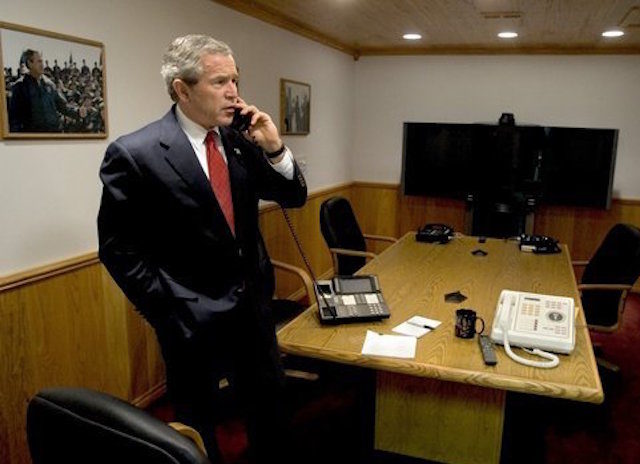
The 43rd U.S. President first displayed his leadership qualities at Phillips Academy, following in the footsteps of his father, George Herbert Walker Bush (also known as #41). During his time at the elite prep school, the elder Bush had served as President of the senior class, secretary of the student council, wrote for the school newspaper, and captained the varsity baseball and soccer teams. His son, however, became the only U.S. President to serve as head cheerleader. Game over.
Founded in 1778 as an all-boys school, Phillips welcomed “W” in the fall of 1964 to its blue-blood dominion in Andover, Massachusetts. The young Texan, lacking in both brains and brawn, channelled his rebellious enthusiasm into sports. Well, sorta. “He was less of a jock… more of a jock hanger-on-er,” said Peter Schandorff, a former classmate. “He was a member of teams, but he never really distinguished himself in sports.”
Although the prodigal son never quite measured up to the achievements of his dad, he never lacked spirit and emerged as a popular student on campus. Years later, he would show off his nimble dexterity by dodging a pair of shoes thrown at him during a press conference in Iraq.
7. Dirty Bird

Andrew Jackson’s plantation home, The Hermitage, in Nashville, Tennessee, would also provide the setting for his well-attended funeral. The solemn event, held on June 10, 1845, included Jackson’s prized African Grey parrot named Poll. But as the crowd began to assemble, the exotic bird had to be removed after cursing a blue streak that would make a drunken sailor blush.
Throughout his life, Jackson’s hardened resolve and aggressive personality earned him the befitting nickname, “Old Hickory.” Today, the 7th U.S. President remains one of the most respected and controversial characters in American history, having been a war hero, defender of limited government, and founding member of the modern Democratic party. He also had a homicidal temper, owned slaves, and contributed to Native American genocide. Not surprisingly, Jackson’s fiery demeanor may well have rubbed off on his foul-mouthed pet.
The most reliable account of the incident comes from the Rev. William Menefee Norment, who presided over the procession. “Before the sermon and while the crowd was gathering, a wicked parrot that was a household pet got excited and commenced swearing so loud and long as to disturb the people,” he said.
Over the years, historians have debated whether Jackson intentionally trained Poll to swear or if the bird merely absorbed his owner’s notorious rough language. Parrots, after all, are an intelligent species known for their ability to mimic sounds and learn words or phrases. Regardless, the outburst provided an apt send-off for a man unafraid of ruffling feathers.
6. Bullet Proof
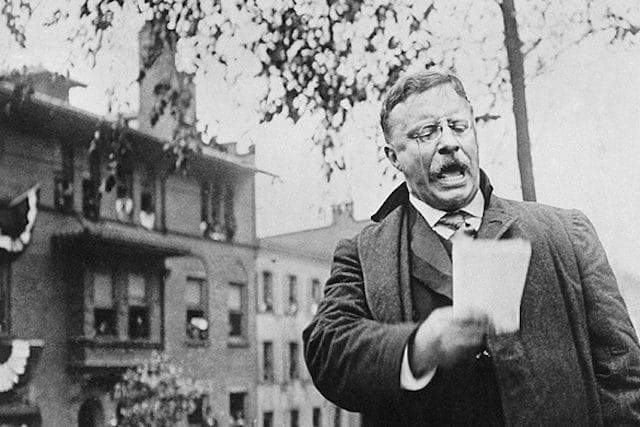
From George Washington to the current White House occupant, library shelves are full of books extolling the perceived virtues and heroic deeds of U.S. Presidents. While some stories range from slightly embellished to flat out lies, others fall into the category of “you-gotta-be-freaking-kidding-me.” Such is an incident involving the 26th President, Theodore “Teddy” Roosevelt.
On October 14, 1912, Roosevelt survived an assassination attempt while delivering a campaign speech in Milwaukee. Wisconsin. “I don’t know whether you fully understand that I have just been shot,” he told the stunned audience. “But it takes more than that to kill a Bull Moose.” He completed the 90-minute talk with the bullet still lodged in his chest — and even more remarkably, the wounded candidate urged the police not to harm the shooter, a deranged religious zealot/saloonkeeper named John Flammang Schrank.
At the time, Roosevelt had been attempting to reclaim the White House for the newly formed Progressive Party. He previously served as the Republican head honcho between 1901 to 1909 but wanted to get back into the game. But not all fans welcomed his comeback.
The projectile, fired from a Colt .38 revolver, struck his upper torso after penetrating a steel eyeglass case and a folded copy of his speech tucked in his jacket. Doctors would later conclude that removing it would be riskier than leaving the slug in place. In the end, Roosevelt would carry the bullet for the rest of his life. As for the Schrank, a jury found him legally bonkers and had him institutionalized at the Central State Hospital for the Criminally Insane until his death in 1943.
5. Movie Star Gazing
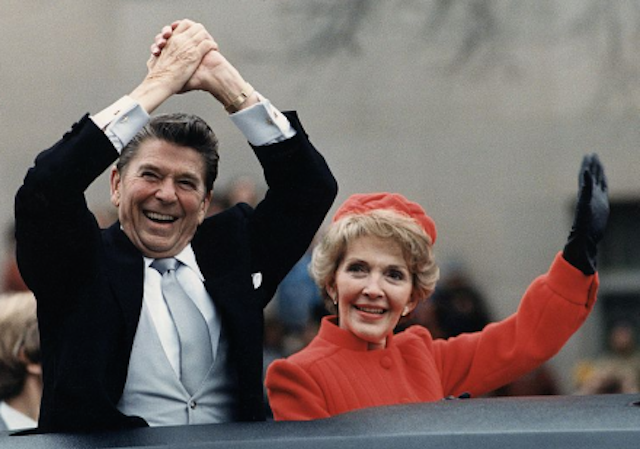
Actors are weird. Some more so than others. Although there’s no harm in reading the daily horoscope or occasionally asking a psychic for help with lottery numbers, Ronald Reagan would regularly consult an astrologer during his eight years as the 40th President. Although we can breathe a collective sigh of relief now, “Rambo Ron” could have done serious damage during the Cold War if anyone had dared step out of line while Mercury was in retrograde
Both Reagan and his wife Nancy’s fascination with the heavenly bodies began long before setting up shop in the nation’s capital. While being sworn in as Governor of California, the former star of such classics as Bedtime for Bonzo and Girls on Probation insisted on waiting until exactly 12:10 am — a time he believed held a fortuitous alignment of the constellations.
After Reagan survived an assassination attempt in 1981, Nancy became increasingly reliant on charts and advice from her personal astrologer, Joan Quigley, who had reportedly warned her that evil would be afoot that fateful day. The President’s entire schedule, including the take-off and landing times of Air Force One, would soon undergo heightened scrutiny — especially during major celestial events.
4. Lyndon Baines’ Johnson

While LBJ’s legacy might be characterized as complicated at best, the big Texan had a simple (albeit crude) way of expressing himself to his friends and colleagues. The President responsible for both the Civil Rights Act and escalating the Vietnam War would simply whip out his preferred appendage — which he proudly dubbed “Jumbo” — to let everyone know which rooster ruled the yard.
Johnson got his first taste of power in 1937 as a Congressman from the 10th Congressional District of Texas. He later joined the Senate following a razor-close primary win that would earn him the mocking nickname, “Landslide Lyndon.” He then continued to scratch and claw his way to become a powerful and intimidating presence in Washington.
According to biographer Robert Dallek, Johnson’s uncouth behavior also included blatant racism, urinating in public, and bragging about having more affairs by accident than JFK ever had on purpose.
3. Really, Really, Ridiculously Good Looking

Although perhaps not as handsome as the titular character in Zoolander, Gerald Ford once worked as a male model. The former Navy officer and future 38th President even landed on the cover of Cosmopolitan. Yes, that Cosmo — the one best known for engaging articles on mind-blowing orgasms and make-up tutorials.
In 1942, Ford posed for a splashy color illustration later used by the popular woman’s magazine. The gig would also introduce him to his future wife, Elizabeth “Betty” Bloomer, who went on to become First Lady as well as start-up a highly successful clinic for the rich, famous, and wasted.
As for Ford’s legacy, the ex cover boy would be remembered mostly for his pardon of Richard Nixon and frequent, embarrassing stumbles. However, to be fair, Ford had been a standout football player on both sides of the ball at the University of Michigan, where he led the Wolverines to two national championships.
2. Rendezvous With Death
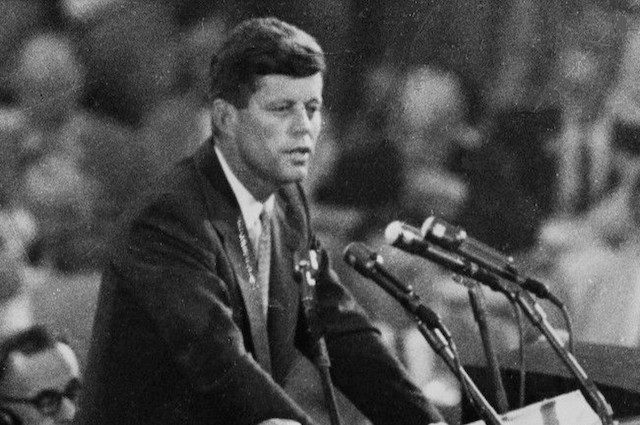
John F. Kennedy suffered from poor health most of his adult life. He also put himself in dangerous situations as both a soldier in WWII and later as America’s first Catholic President. All told, the iconic figure called “Jack” received sacramental last rites of the church on three occasions before his eventual assassination.
In 1947, doctors had diagnosed Kennedy with Addison’s disease, a rare disorder of the adrenal glands. He became ill while returning home from England aboard the Queen Mary, prompting his family to summon the ship’s priest. He later received the sacrament in 1951 after experiencing a high fever while traveling in Asia and again in 1954 after slipping into a coma following surgery stemming from chronic back problems.
Perhaps JFK’s most poignant example of his bittersweet odyssey can be found in the words of one of his favorite poems, “I Have A Rendezvous With Death“ by Alan Seeger. The haunting verse, written shortly before Seeger was killed at the Battle of the Somme, describes the soldier’s premonition of a youthful and glorious end in combat. Amen.
1. Cat House
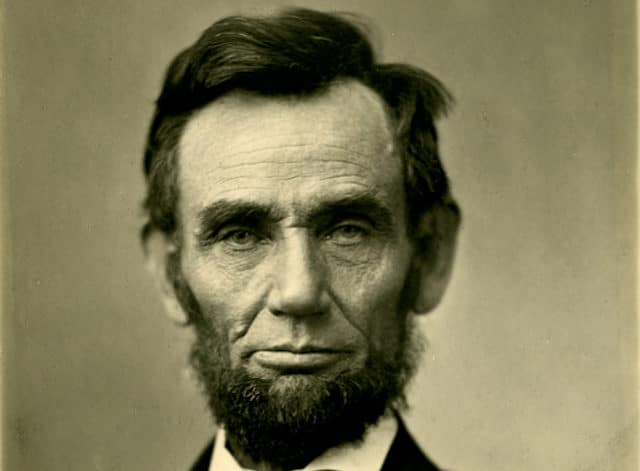
Among the many qualities that made him the most revered President in American history, Abraham Lincoln’s obsession with cats is egregiously overlooked. The man who kept the nation from being torn apart during a bloody Civil War enjoyed a unique kindred spirit with felines, whose company he often preferred to humans. Pure genius.
After being elected President, the former Springfield, IL lawyer, received an unexpected gift of two kittens from Secretary of State William Seward. Lincoln named them Dixie and Tabby, and frequently doted on them inside the White House.
The 16th President once fed Tabby from the table during a formal dinner, much to the chagrin of his fastidious wife, Mary. “If the gold fork was good enough for former President James Buchanan,” Lincoln said, “I think it is good enough for Tabby.” And on another occasion, Lincoln reportedly said, “Dixie is smarter than my whole cabinet! And furthermore, she doesn’t talk back!”
During the siege of Petersburg in March 1865, Lincoln found his attention distracted by the sound of mewing kittens near General Ulysses S. Grant’s headquarters in City Point, Virginia. One of the bystanders, Admiral David Porter, later wrote about the President caressing three stray kittens. “It well illustrated the kindness of the man’s disposition, and showed the childlike simplicity which was mingled with the grandeur of his nature.”
Porter also recalled Lincoln quietly telling them, ‘Kitties, thank God you are cats, and can’t understand this terrible strife that is going on.’